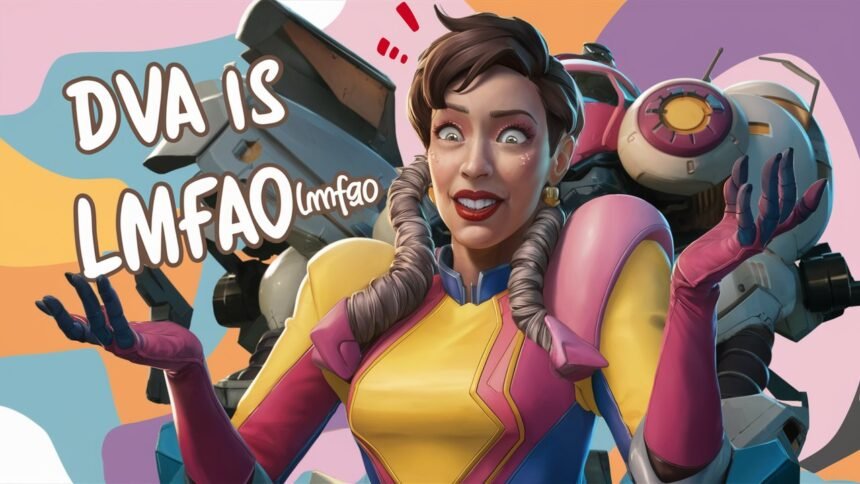The gaming community has long celebrated Overwatch for its diverse cast of characters, each with unique backstories and identities. Among them, D.Va—the mech-piloting South Korean hero—has sparked widespread discussion, particularly around fan theories suggesting she might be transgender. The phrase “D.Va is trans lmfao” has become a meme and a point of curiosity, blending humor with genuine advocacy for LGBTQ+ representation. This article unpacks the origins of this theory, analyzes its cultural significance, and explores why such discussions matter in modern gaming.
Who Is D.Va? Understanding the Character’s Canon Background
Origins of the “D.Va Is Trans” Theory: Fan Culture and Symbolism
The theory gained traction in online forums like Reddit and Twitter, where fans began dissecting her voice lines, sprays, and in-game interactions. For example, a rainbow-colored bunny emblem on her mech (a nod to the LGBTQ+ pride flag) and her supportive voice line “Love wins!” during Pride Month events fueled speculation. While these elements could be coincidental, they resonate with players seeking representation in media. Additionally, D.Va’s narrative of reinvention—from gamer to warrior—parallels transgender journeys of self-discovery, a metaphor embraced by parts of the community. Critics argue these connections are overreach, but proponents highlight how fan theories often fill gaps left by creators.
Community Reactions: Support, Backlash, and the Role of Headcanons
The “dva is trans lmfao” theory has polarized fans. Supporters celebrate it as a step toward inclusivity, citing the lack of confirmed transgender characters in Overwatch. They argue that headcanons (self-created interpretations) empower marginalized players to see themselves in media. Conversely, critics claim the theory contradicts established lore or accuse fans of forcing diversity where none exists. This debate reflects broader tensions in fandom: who “owns” a character’s identity—creators or audiences? While Blizzard has not confirmed the theory, the discourse underscores a hunger for authentic representation in gaming.
Why Representation Matters: The Impact of Transgender Narratives in Gaming
Representation in media shapes societal perceptions and validates lived experiences. For transgender players, seeing a beloved character like D.Va potentially reflecting their identity fosters a sense of belonging. Games like The Last of Us Part II and Celeste have been praised for their nuanced LGBTQ+ storytelling, raising expectations for mainstream titles like Overwatch. Even unconfirmed theories can spark meaningful conversations about inclusivity, pushing developers to consider diverse narratives. The “D.Va is trans” discussion, while speculative, highlights the importance of intentional representation rather than leaving it to subtext.
Blizzard’s Stance and the Limits of Ambiguity
Blizzard has remained silent on D.Va’s gender identity, focusing instead on her role as a hero. This ambiguity allows fans to project their interpretations but also risks tokenism if not addressed thoughtfully. While Overwatch features LGBTQ+ characters like Tracer (a lesbian) and Soldier: 76 (gay), their identities were confirmed retroactively, leading some fans to demand clearer upfront representation. The D.Va theory tests how developers balance creative control with audience expectations, especially in live-service games evolving over years.
Conclusion: The Power of Fan Theories in Shaping Gaming Culture
The “dva is trans lmfao” meme is more than a joke—it’s a reflection of the LGBTQ+ community’s desire to see themselves in the stories they love. While the theory remains unofficial, its persistence demonstrates how fan engagement can influence cultural narratives. Whether Blizzard ever confirms it or not, the conversation has already highlighted gaps in representation and the need for inclusive storytelling. As gaming continues to evolve, so too will the demand for characters who mirror the diversity of their audiences.
Frequently Asked Questions (FAQs)
1. Is D.Va officially transgender?
No, Blizzard has not confirmed D.Va as transgender. The theory stems from fan interpretations of her design and lore.
2. Why do fans believe D.Va is trans?
Clues like her rainbow-themed cosmetics, supportive voice lines, and narrative of personal reinvention have been cited as symbolic evidence.
3. How has Blizzard responded to the theory?
Blizzard has not directly addressed it, focusing instead on her role as a hero. The company has confirmed other LGBTQ+ characters in Overwatch.
4. Why does representation in gaming matter?
Inclusive narratives validate marginalized groups, fostering empathy and broadening the medium’s cultural impact.
5. How can fans discuss theories like this respectfully?
Acknowledge the difference between headcanons and official lore, and prioritize constructive dialogue over hostility.







